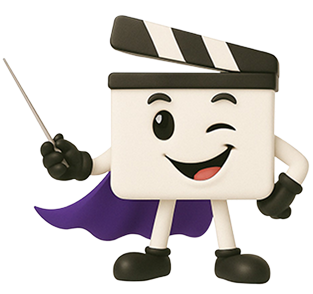Quick Summary
TL;DR: Building an AI avatar influencer in 2026 is easier than ever. With the right tools, a clear niche, and a consistent posting rhythm, anyone can create a virtual creator who looks real, speaks naturally, and grows an online audience. AI avatars work nonstop, reduce production costs, and help creators scale without burnout. #tldr
- Core Flow:
Idea → Avatar Design → Content Creation → Consistency → Growth → Monetization
- Growth Hacks:
Trending Sounds → Smart Posting Times → Native Repurposing → Human-like Captions
- Mistakes to Avoid:
Over-editing → Low Engagement → Copyright Risks → No Consistency → Weak Persona → Ignoring Analytics
- Final Takeaway:
Focus on three things: a strong niche, a relatable personality, and a posting system that keeps your avatar active without feeling robotic.
What if you could create an influencer who never sleeps, never feels shy in front of a camera, and shares content all day and night? You might be surprised to know that AI avatar influencers can connect with audiences just like real people. They have no limits on time, energy, or production costs. As more creators explore new ways to grow their online presence, learning how to build an AI avatar influencer is quickly becoming one of the most exciting opportunities in the creator economy.
In this guide, we’ll discuss everything from choosing your avatar’s niche and personality to selecting the right tools, designing visuals, creating generative AI content, and even monetizing your digital influencer. You’ll also get tips on storytelling, audience growth, and how to scale your virtual persona like a real brand.
The rise of AI-driven influencers is already reshaping the digital landscape. According to Influencer Marketing Hub’s 2024 Benchmark Report, over 60% of marketers are now exploring AI or virtual influencers as part of their campaigns.
What Is an AI Avatar Influencer?
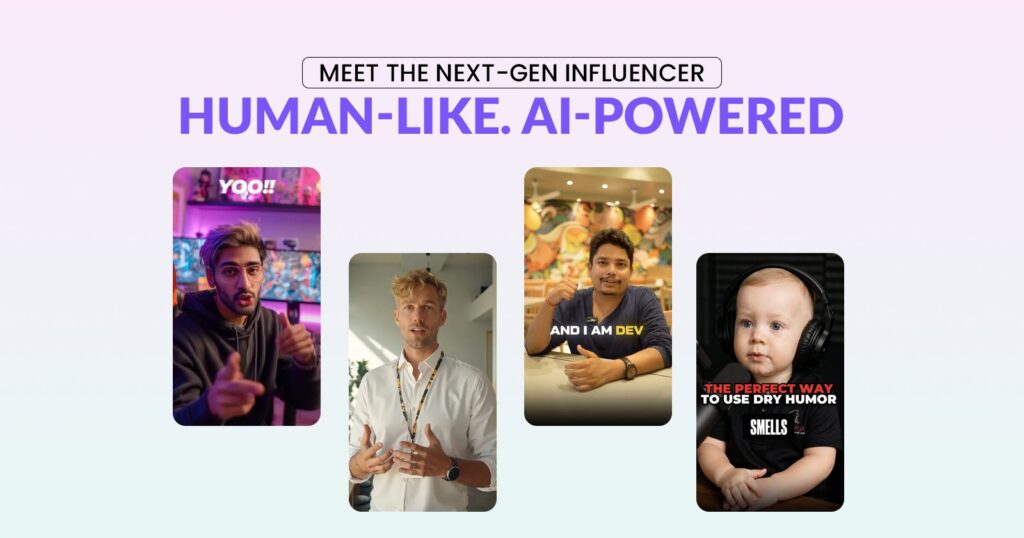
Before we discuss how to build one, let’s clear up what an AI avatar influencer actually is. While the terms “AI avatar” and “AI influencer” are often used interchangeably, they’re not quite the same thing.
An AI avatar is a digital representation of a person, real or fictional, created to resemble, move, and sometimes sound like a human. You might see them used in brand explainer videos, customer service bots, or personal content for creators who prefer to stay off-camera.
An AI influencer, on the other hand, is an entirely virtual personality built to interact on social media. They post content, engage with audiences, and even collaborate with brands, much like human influencers do.
When you combine these two, you get an AI avatar influencer, a realistic, interactive digital persona powered by artificial intelligence. These influencers are designed to look human, speak naturally, and represent brands across platforms, often with consistent messaging and a 24/7 presence.
Here’s a quick comparison to help you understand the difference.
| Type | Description | Best Use Case |
|---|---|---|
| AI Avatar | Digital representation of a human | Personal branding, anonymity |
| AI Influencer | AI-driven personality for social media | Marketing, brand collaborations |
| AI Avatar Influencer | Hybrid: visually human + socially interactive | Full-time virtual creator |
AI avatar influencers are already changing how brands communicate online. They offer the perfect balance of authenticity, scalability, and creativity, without the logistical challenges of traditional influencer marketing.
For a deeper look at how AI is reshaping content creation and marketing across the world, check out our blog on AI Content Creation.
Why Build an AI Avatar Influencer in 2026?
The influencer world is changing fast, and AI avatar influencers are right at the center of it. Whether you’re a creator who wants to scale without burnout or a brand aiming for fresh engagement, now is the perfect time to start exploring this space. Let’s look at why 2026 is shaping up to be a big year for AI-driven creators.

1. The Creator Economy Is Exploding
The creator economy is growing, but it is also demanding. Many content creators work long hours and face tight deadlines. They feel constant pressure to stay relevant. AI avatar influencers are changing this by helping creators stay visible without risking burnout.
Faceless creators and AI-generated personalities are leading a quiet revolution online. With the right tools, anyone can create a realistic digital version of themselves, which can speak naturally and generate content at any time. Using a digital version lowers production costs and reduces the need for filming setups. It also gives creative freedom that isn’t limited by time or location.
Simply put, AI influencers don’t need rest days, lighting setups, or retakes – they just need your vision and direction.
2. Brands Are Paying for Virtual Influencers
Big brands are already seeing the value in virtual influencers. From Lil Miquela, a virtual fashion model with over 2.6 million Instagram followers, to Aitana Lopez, a Spanish AI model earning thousands in brand deals each month, these digital personalities are proving how profitable the trend can be.
According to Influencer Marketing Hub’s 2024 report, over 60% of marketers have either worked with a virtual influencer or plan to in the near future. The reason? Virtual influencers can maintain brand alignment, never miss deadlines, and offer full creative control, all while building strong audience connections.
Even brands like Prada, Samsung, and IKEA have used AI influencers in campaigns, seeing engagement rates equal to or higher than human creators.
3. Low Barrier, High ROI
You can create an AI avatar influencer without spending a lot of money or having a big production team. Many people start with budgets of just $20 to $50 by using free or low-cost AI automation tools to create avatars, voices, and short videos. The key investment is your creativity. Focus on telling a great story, choosing a specific niche, and being consistent.
Tip: Most AI influencers start with just a few photos, a defined niche, and free avatar tools, but the key lies in storytelling and personality.
As your virtual persona grows, you can use tools like HeyGen, Synthesia, and ShortVids’ AI Automation Workflows to scale your content production efficiently. If you’re curious about how to automate your content creation process, explore our detailed guide on AI Automation Workflows.
Examples of Successful AI Avatar Influencers
AI avatar influencers are changing what “digital fame” means. They look realistic, act like real people, and connect with their audiences personally. Let’s look at some popular virtual personalities who have gained large followings and worked with brands.
| Influencer | Niche | Followers (Approx.) | Monetization Estimate |
|---|---|---|---|
| Lil Miquela | Fashion & Music | 3M+ (Instagram) | Estimated $10K–$20K per sponsored post |
| Aitana Lopez | Fitness & Lifestyle | 300K+ (Instagram) | Roughly $5K to $10K per campaign |
| Lu do Magalu | Tech & Product Reviews | 15M+ (across platforms) | Multi-million brand collaborations |
| Imma | Digital Art & Culture | 400K+ (Instagram) | Around $3K to $8K per partnership |
Each of these virtual influencers has a unique identity and purpose. Lil Miquela promotes fashion and music collaborations. Aitana Lopez focuses on fitness and healthy living. Lu do Magalu, from Brazil, is one of the most followed virtual personalities because she reviews tech products. Imma adds a creative touch by blending art and technology into cultural discussions.
They’ve proven that audiences don’t necessarily need a real person to form real engagement. What matters more is personality, storytelling, and consistent interaction.
Lessons from Top Virtual Influencers
If you’re planning to build or collaborate with an AI avatar influencer, here are a few key takeaways from their success.
- Define a relatable persona – The best virtual influencers have a clear story, background, and tone that make them feel authentic.
- Stay consistent with posting – Consistency, much like in human creation, builds trust and keeps audiences engaged.
- Collaborate strategically with real brands – Select brand partnerships that naturally align with your influencer’s personality and values.
These examples show how creativity, strategy, and storytelling work together to create strong digital identities, whether for people or virtual characters.
Tip: For a deeper look at how brands are using AI in marketing, check out our blog on ShortVids AI Creation SAC to build your AI Twin.
Step-by-Step: How to Build an AI Avatar Influencer
Here’s how you can build your own AI avatar influencer from scratch and bring it to life online.
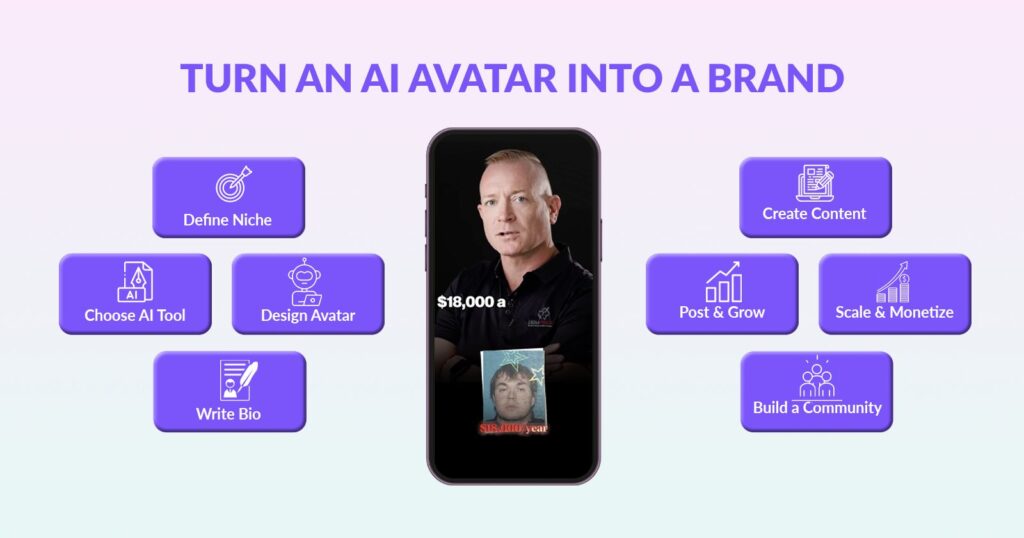
Step 1 – Define Your Influencer’s Niche and Personality
Every great influencer starts with a clear identity. Decide what your AI avatar will stand for and who they’ll speak to.
- Choose a profitable niche like fitness, gaming, beauty, or wellness.
- Develop a tone, backstory, and core message that reflect your influencer’s voice.
- Create a persona that feels real and relatable.
For example, a travel-loving AI creator who documents hidden gems around the world while sharing tips for mindful adventures.
Pro Tip: Create a simple “character profile sheet” before designing your avatar to stay consistent when crafting content and brand collaborations.
| Attribute | Example |
|---|---|
| Name | Nia Nova |
| Age | 25 |
| Niche | Wellness & Lifestyle |
| Personality | Calm, inspiring, curious |
| Platforms | Instagram, YouTube Shorts |
This quick reference keeps your AI avatar’s personality, tone, and goals aligned across every post and campaign.
Step 2 – Choose the Right AI Avatar Creation Tool
Once your influencer’s personality is set, the next step is finding the right platform to bring them to life. There are several tools that help you design, animate, and even give your avatar a voice.
| Platform | Key Features | Price Range | Best For |
|---|---|---|---|
| The Influencer AI | Build full avatar influencers | $19 to $99/mo | Beginners & creators |
| Synthesia | Video avatar + text-to-speech | $22 to $60/mo | Businesses & educators |
| D-ID | Realistic faces with animation | $5 to $50/mo | Storytelling creators |
| Reface | Entertainment-style avatars | Free to $10/mo | Casual users |
| HeyGen | Cloning, voice sync, realistic animation | Cloning, voice sync, and realistic animation | Pro-level creators |
Each of these tools offers something different. Synthesia is great for professional-looking talking avatars, while HeyGen is known for lifelike facial expressions and voice syncing.
If you want to see how these platforms fit into content creation workflows, check out our blog on AI video editing tools. It covers how creators and brands use AI-powered tools to save time and scale production.
Step 3 – Design and Customize Your Avatar
Now it’s time to bring your AI influencer to life visually. Start by uploading reference images or using your chosen platform’s presets. Most AI avatar tools let you fine-tune every detail from facial structure and hairstyle to clothing and voice tone.
Focus on small touches that make your avatar feel real. Change facial features, clothing, and ethnicity to match your niche and brand identity. Create two types of images: use static images for profile photos and thumbnails, and use motion graphics for Reels, Shorts, or TikTok videos.
Tips for Realistic Design
- Avoid looks that seem too perfect or overly polished. A little imperfection makes your content feel human and relatable.
- Use a consistent background or color theme that aligns with your niche.
- Match your avatar’s expressions and gestures with the tone of your content — calm for wellness, upbeat for entertainment, confident for business.
These subtle design details are what make an AI influencer believable and engaging to audiences.
Step 4 – Create a Backstory and Bio
This is where your AI avatar stops being a character and starts feeling like a person. Storytelling gives your influencer depth and helps followers connect emotionally.
Write a short bio that introduces your avatar, what they stand for, and what kind of content they’ll share. Add a simple “origin story” where they came from, what inspires them, or what their mission is.
Add fun details like favorite hobbies and quotes to make the profile feel authentic.
Step 5 – Generate Content Using AI Tools
After you create your avatar, focus on making content that engages your audience and shows your brand. Use AI tools like Midjourney, Runway, and HeyGen to quickly create niche-specific visuals, including realistic videos and creative images.
For captions, hooks, and scripts, use writing tools like ChatGPT or Jasper to make the process faster and easier. These tools can help you come up with post ideas and improve your tone of voice. After you prepare your content, automate your posts with platforms like Buffer, Later, or Metricool. This way, you can stay consistent without having to post manually.
Content Types to Post
- Reels that show daily life, collaborations, or creative moments
- Tutorials and tips that educate or entertain your audience
- Inspirational posts that connect emotionally with followers
- Behind-the-scenes clips to show “how” your AI avatar works
- Ask Me Anything sessions that encourage interaction and curiosity
Being consistent and creative is important. The more your avatar interacts, the more real it feels to your audience.
Step 6 – Build Social Profiles and Start Posting
After you prepare your content, set up your avatar’s social media profiles on Instagram, TikTok, and YouTube Shorts. Use the same profile picture (DP), colors, and tone on all platforms to keep your brand consistent.
Include a short and catchy bio that clearly defines your niche, add relevant hashtags, and start posting 3 to 4 times a week. Regular posting helps your avatar appear active and reliable, two traits that build trust quickly.
Keep an eye on how people respond. The first few months are all about testing and learning what works best for your audience.
Step 7 – Analyze, Improve, and Scale
Once your AI influencer starts gaining traction, it’s time to analyze the results. Look at engagement rates, follower growth, and brand mentions to understand what content performs best.
Use analytics tools built into platforms like Instagram Insights or YouTube Studio, or external ones like Hootsuite Analytics or Sprout Social. The goal is to identify patterns, which posts get the most engagement, what topics your audience enjoys, and what times drive the best visibility.
As you gather insights, refine your strategy. Expand by introducing AI influencers in different niches or creating multi-language content to reach global audiences.
Small, data-driven adjustments will help your AI avatar grow faster and stay relevant in the changing creator economy.
How to Build and Monetize Your AI Avatar Influencer
Building an AI avatar influencer is about creativity and turning that digital presence into a steady income stream. Once your avatar has a clear niche and a growing audience, there are several ways to monetize the following and brand visibility you’ve built.
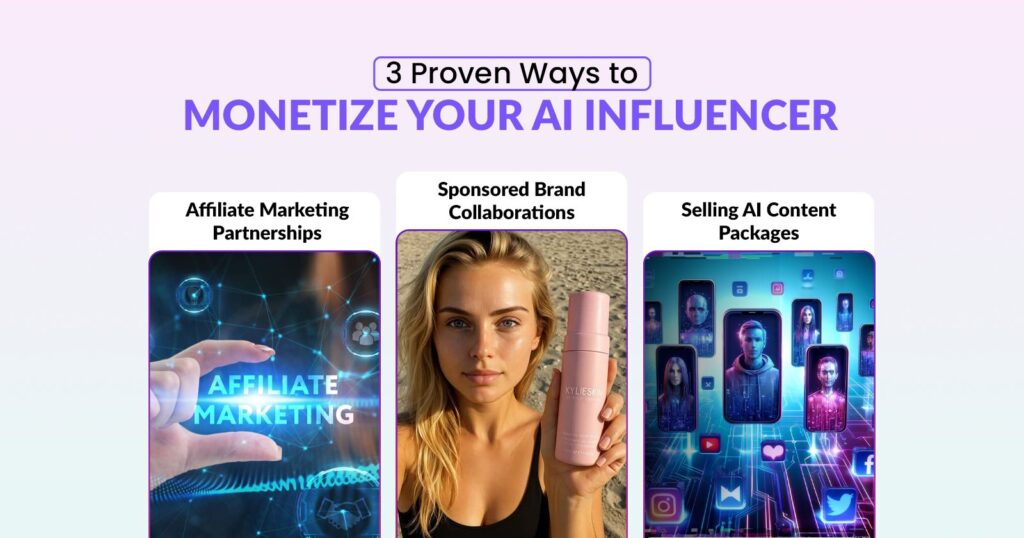
Below are three of the most practical and profitable options for 2026 to build an AI avatar influencer.
1. Affiliate Marketing
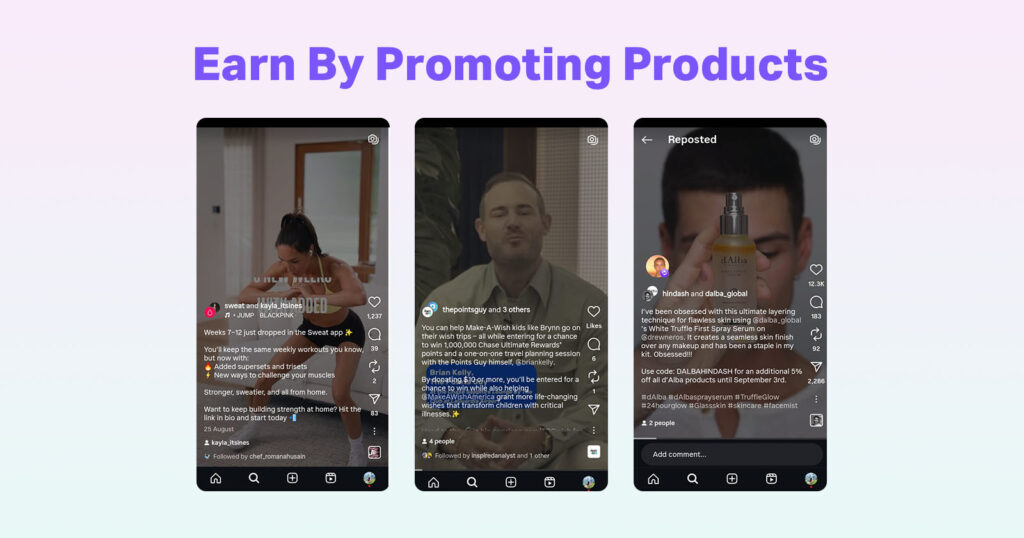
One of the easiest ways to start earning is through affiliate marketing. Your AI avatar can promote products that fit your niche, whether it’s digital tools, beauty brands, or lifestyle gear. When followers click on your referral links and make a purchase, you earn a commission.
For example, if your avatar shares fitness tips, you could partner with sportswear or supplement brands. Even small audiences can generate income this way. Some AI influencers make $500 to $1,000 a month simply by promoting relevant products through affiliate programs like Amazon Associates or ClickBank.
The key is to keep promotions authentic and aligned with your avatar’s personality so followers trust the recommendations.
2. Brand Collaborations
Once your AI influencer gains some traction, brands will start noticing. Many companies are now open to working with virtual influencers for product promotions, ads, or event campaigns.
You can collaborate directly with agencies or join AI influencer marketplaces such as VirtualHumans.org or The Clueless Agency, where brands look for virtual personalities to represent their products.
Payments vary based on engagement and niche, but even a small following can earn $200 to $1,000 per post, while more established AI influencers can make several thousand dollars per campaign.
To stand out, focus on creating high-quality, story-driven content that matches the brand’s tone and audience.
3. Selling AI Content Packages
Another powerful way to earn is by offering AI-generated content packages to other creators or businesses. With the right editing and storytelling, you can turn your avatar into a content studio of its own.
For instance, you could sell short-form videos, reels, or branded AI avatars for small businesses that want to improve their social media presence. If you want professional help polishing or repurposing your content, check out ShortVids Video Editing Services. They specialize in content repurposing for influencers and can help transform simple AI clips into scroll-stopping videos that perform well across platforms.
This approach is ideal for creators who want to scale without constantly being on camera. Your avatar can keep working, creating, and earning, all while you focus on strategy and storytelling.
Growth Hacks and Mistakes to Avoid When Building an AI Influencer
Creating an AI avatar influencer takes creativity and consistency. You may need to try different approaches to see what works. To succeed, you must understand what your audience likes and what they don’t. Here are some ways to increase your reach while keeping your content genuine and focused on your audience.
Growth Hacks

1. Ride Trending Sounds Early
Trends change quickly. Using popular sounds or music clips can help you get more visibility on TikTok and Instagram. Pay attention to what is popular in your niche and use it before it reaches its peak. This is when algorithms are most likely to promote your content.
2. Post with Rhythm, not Randomness
Post three to four times a week to build brand recognition. Do this during the hours when your audience is most active. Use scheduling tools like Buffer or Later to help you keep your posts consistent without needing to do it manually every time.
3. Repurpose, don’t Repost
Each platform has its own rules. A 15-second TikTok clip may need to be shortened or have different captions to work well on YouTube Shorts. Small tweaks make your videos feel native wherever they appear, and that helps the algorithm favor them more.
4. Speak like a Person, not a Post
Even if your influencer is AI-generated, your captions should feel real. Write like you’re talking to someone who follows you for inspiration, not like you’re announcing something. Ask questions, tell short stories, and use emotions that people relate to, such as curiosity, humor, or calm confidence.
Mistakes to Avoid
1. Over-editing your AI Avatar
Perfect appearances aren’t always attractive. When avatars look too flawless, they lack the warmth and small imperfections that people naturally connect with. Use subtle expressions, realistic lighting, and natural poses to make an AI influencer look believable.
2. Ignoring Audience Engagement
Many creators post great visuals, but often do not respond to comments or messages. This is a big mistake for influencers using AI. Engaging with your audience helps increase visibility and shows platforms that your content promotes real interactions.
3. Using Copyrighted Materials
Always check your background music, stock footage, and visuals first. Copyright strikes can block or remove your videos, which means you could lose followers and partnerships. To stay safe and professional, use royalty-free libraries or licensed tracks.
When you combine strategy with authenticity, AI avatar influencer growth becomes steady and sustainable. Post with purpose, connect like a human, and let your virtual personality evolve naturally. That’s how your AI influencer turns from an experiment into a brand.
Final Thoughts
Creating an AI avatar influencer isn’t just a passing idea. It’s a fresh, exciting way to share your story, grow your brand, and build something that works even when you’re not online. You don’t need a studio, a big team, or years of experience. You just need an idea, the right tools, and a bit of consistency.
If you’ve been thinking about trying it, this is your sign to start now. The world of digital creators is changing fast, and AI influencers are shaping what’s next.
FAQs About Building an AI Avatar Influencer
It depends on your setup. You can start as small as $20 to $50 using free or low-cost AI tools. As you scale and invest in better animation, voice, and editing, costs can rise to a few hundred dollars a month.
Choose an avatar creation platform such as HeyGen, D-ID, or Synthesia. Customize the avatar’s appearance, voice, and style, and then define a niche along with a posting schedule.
It is legal to create original content without unauthorized likeness. Always disclose when content is generated by AI.
Yes, many do. They earn through brand deals, affiliate marketing, and creating content for clients. Some well-known virtual influencers reportedly make thousands per campaign.
Tools like Reface, D-ID, and The Influencer AI are great for getting started. They’re easy to use, affordable, and require no technical background.
You can share your likeness if you feel comfortable. Just make sure not to copy or clone real people without their consent.
Instagram permits AI-generated accounts if they comply with community guidelines and clearly indicate they are virtual.
Book a Call Today
- Fixed monthly plans starting at $999
- 24-hour turnaround time (or less) on all short-form edits
- 3-layer quality check system on every video
- No more chasing freelancers or managing editors
- Scale up to 50+ videos/month without hiring in-house
- Content team trained on platform trends, scroll-stopping hooks & storytelling
- Fully managed by professionals – you just upload & approve
- Response time: Under 1 hour (US & GCC time zones)
Cut your production costs, not your standards.

